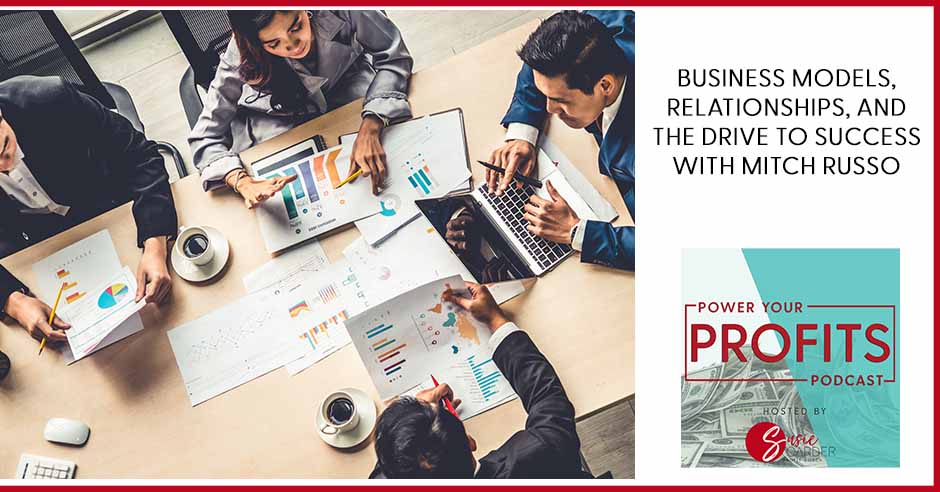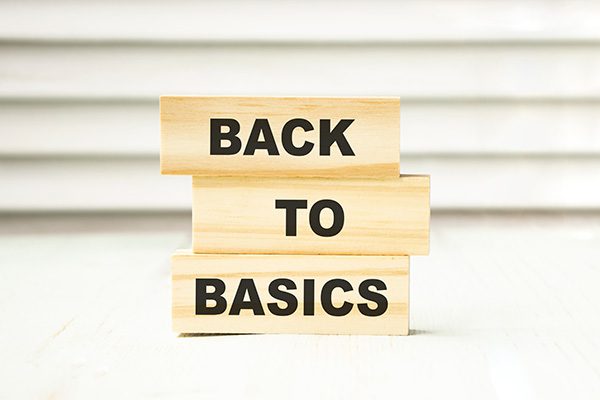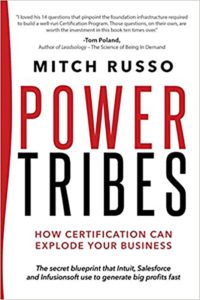
For a business to ensure success, you need to have a business model calibrated to your specific needs. With a proper model in place, you can be sure you are headed in the right direction. In this episode, Susie Carder discusses creativity and technology in business with a true rock star, the founder of ClientFol.io, Mitch Russo. Mitch discusses how he came up with the idea for his breakthrough coaching systems and how his experiences inspired its creation. Learn more and be inspired by Mitch and his journey by tuning in.
—
I am so excited to introduce you to Mitch Russo. He started a software company in his garage, sold it for eight figures, and then partnered with Tony Robbins and Chet Holmes to build a $25 million business together. He was nominated twice for Inc Magazine Entrepreneur of the year. Mitch helps companies scale rapidly. His first book, The Invisible Organization, and his second one called Power Tribes – How Certification Can Explode Your Business, has helped thousands of companies scale rapidly. He’s here to help coaches solve an old age problem while enhancing the results with their clients using his new coach practice management software called ClientFol.io. Every time I listen to Mitch, I’m blown away. Hold on to your seats. Welcome, Mitch. I’m so excited to have you.
—
I’m so excited, Mitch, that you are here. Thank you so much for being here. I like to start every interview reading your bio but I want you to share your badass story. Why should we pay attention? There’s so much noise going on there. I don’t think your bio tells the juiciness of who you are because you are a beast.
First of all, I was a lead guitar player in a rock band. I started my only band in high school. Susie, I’ve got to tell you why I started my band. I started it because I was shy. I was afraid to talk to girls and figured if I had a rock band, I could probably attract more girls.
Did it work?
It worked like gangbusters. We had a lot of fun with it. It turns out that we’ve got real disciplined about it. We practiced and created a setlist, then we started performing for sweet sixteen’s and college frat parties. Eventually, we performed for one of the mayor’s pre-election parties. We did well for a bunch of 16, 17-year-olds who were too young to even drive at the time. We started at $50 a night. By the time we all graduated high school, we were making $500 a night. We were the highest-paid local rock band in the area.
Not only business acumen but he can serenade us while we do it. What instrument did you play?
Lead guitar.
Let your customers guide you to where they want to take your product.
From starting a rock band to building a company to $10 million with a $5,000 investment, I want to hear how.
First of all, throw out everything you know about funnels, marketing plans, and all this stuff. Start with basic needs and say, “What do I need that I can’t find?” I want to discover something that is not there that fills a need. Usually, that’s where most of my great ideas come from. In this case, I was trying to figure out how to keep track of time, and I couldn’t find a tool to do it.
We decided to build it and that was called Timeslips. Timeslips started as a very small program for pop-up time-tracking. Later, it turned into a full multi-user billing and invoicing system for lawyers and accountants. Here’s the second secret. Let your customers guide you to where they want to take your product. Have a vision. If it doesn’t exist so create it in your mind. Create it in whatever form it needs to take. Be completely open, accept and solicit feedback from your customers at every stage.
That’s how I built my multimillion-dollar business. When I first started it, I didn’t have a strategy. People are going, “Susie, can I buy this?” I’m like, “You want to buy this?” It was my operations manual, which I thought was nerdy and geeky. I brought it to show them because it’s a visual industry and they were like, “We will buy it.” My pricing strategy, Mitch, which I’m embarrassed to say, “How much will you pay for that?” It worked. I build a multimillion-dollar company by going, “Mitch, how much will you pay for that?”
That’s how you have to do it. We have to price test. We don’t know what people will pay until we ask. That’s how I went from $50 a night to $500 a night for performances. More or less doing the same thing as you but we kept raising the price until we hit resistance. If we went to $600, we couldn’t get booked.
I keep raising the price based on, “I’m doing too much work.” Back in the ‘90s, when we started coaching, and coaching was new, Inc Magazine wrote an article about it and I’m like, “I can do this coaching thing slowly.” I didn’t have a pricing strategy. I don’t know how to do it. This was way before the day where we had software share. We had to build it all from scratch. You made cutting-end software for coaches in a crazy crowded market.
There’s so much competition and entrepreneurs. We don’t know what we don’t know, so we get sparkle-eyed like, “This is going to solve all my problems.” Share with people what’s different. What did you create? I’m assuming you created it from finding and filling the need. The need that you saw on what needed, listened to our customers and said, “A-ha, I have it.” Tell me about that.

The story is very simple. It’s probably the same story that every one of you reading has already had of your own. That is, “I need something. I will look for it. I will try this. None of this worked.” Here’s the difference between a lot of people and me. A lot of people will try and make use of something that’s almost good enough. I said, “No way. I need this. I can’t find it, so I had to build it.”
The truth of the matter is I didn’t expect it to turn into a full-blown coaching software and accountability system but I needed it myself. I built it for myself. I have been a coach for years. My coaching business started after I sold my software company. Other software company CEOs came to me and said, “How did you do that? Can you give us a hand? Can you help us do that, too?”
That’s when I became a coach without realizing that’s what it was called back then. I had that problem. I was willing to pay anything for software that would let me manage my client base and do it efficiently without a huge learning curve. Susie, I have no patience. I can’t sit and watch hours of training videos. It drives me nuts. When I built ClientFol.io, one of the prime directives was it’s got to be easy to use that someone could learn it in about twelve minutes.
We have a 12-minute, 51-second training video and that’s the whole platform. That’s everything in there. It’s a very robust platform. The other thing I didn’t like about the other software was there were a lot of these got-yous like I have two clients and it’s $39 a month but you add a third client that’s $139 a month. I said, “This has to be very low priced so it can accommodate beginner coaches.” Unlimited clients, so they can grow forever. At the same time, it has to have an expanding feature set as the company matures, which has been happening.
Talk about us. What are all the assets that ClientFol.io does? You have this list of, “Here are all the things it replaces, how much it would cost you, all the things that were placed and what we do,” which was crazy because I don’t know if anybody ever adds up. I do it every year. I add up all that miscellaneous software but you have to have, “This and that one has to speak to this one.” You are like, “Holy cow.”
Before I had ClientFol.io and started a session, I would open up five different apps and browser windows all over two huge screens on my desk. I would have one for note-taking, a spreadsheet for tracking goals and statistics, a WordPress window open to create the homework report, another browser open for my calendar, and another browser yet open for Zoom and capture the Zoom link. At the end of the session, I had to combine everything from all these different things into a single email and send it to the client. The following week, I had to go search for that email and read what I wrote. I said, “I am spending 25 minutes on admin per 1-hour session.” It’s driving me out of my mind.
This is my peak cognitive timeframe right in the middle of the day when I feel like I am the best at what I’m doing, and yet, I can’t stand spending that time on $10 an hour work. I reduced all of that to five minutes per session. When you log into ClientFol.io, pop past the session, and tab open, there are all your past sessions, notes, accountability questions, graphs from your goals and stats, the Zoom recording, and the downloaded files that you attached. Everything is right there. My session takes five minutes to do full admin on. For $20 a month, this is probably the easiest decision anyone can make about how to manage their coaching practice.
Relationships are the best way to jumpstart any company.
You look out for an average CEO or somebody at our level that was paying. Let’s say you are paying yourself $250,000 a year. That’s $119 an hour that you are spending doing admin work because we always say there’s the time before the time after. A 1-hour call could be 3 hours if you don’t have a system in place. If you are efficient, that 1-hour call is 1-hour and 40 minutes.
When we look at it that way, what I love to do is go, “What’s that worth to you? What’s that extra $119? What could you do for that?” Get on the phone, call somebody else. Get on the phone, deliver a service. Get on the phone, send somebody else. “I’m the money. I’m going to look at getting on that phone and go on people making it happen.”
I want to make sure that you have the time in the middle of the day when you are fresh and sharpest can be to do that instead of writing out notes. It’s insane. That’s what the software is about. The funny thing is that, when I started Timeslips Corporation, my partner and I put $5,000 into the bank each. We had $10,000 together, spent $6,000 of that on marketing, and it completely failed. Forget the funnels, forget all this other stuff. The reason I said that is because I felt like relationships are the best way to jumpstart any company. I use as many great friends and relationships as partners as I possibly can.
I’m a member of three different masterminds. I have a lot of conversational time with folks with who we can do joint ventures together. In many cases, people say, “Mitch, don’t worry about reciprocating. We know you are a new company with ClientFol.io. We will promote it because we love it.” I’ve got off a Zoom session with a gentleman who said, “I have been using this thing for three months. I’m promoting it to my entire community because we think everybody should use it. It’s unbeatable for the price, and we still haven’t found anything that duplicates the functionality.” That’s why it’s important to stay completely focused on understanding who your partners in your business are.
When you talk about the price, it’s only $200 a year. It’s not crazy when you start looking at the other software. I won’t name names. You know what you have to do to maintenance but it’s not specific towards coaching. That’s the beauty of this. It’s specific towards tracking your time, schedule and notes. When I look at the usability of it, it up levels your coaching service.
What I love is the history component, which is, I don’t know if you have ever been sued as a coach but if you don’t have that history and note-taking, you will lose and have to refund the money. I’m diligent with my notes to go, “Here’s what it is, what we did and the value.” Nobody ever wants to think about that but part of being a business owner is, “How do I protect myself because people are people.” If you delivered the service, we have to be able to prove it. Most coaches are winging it, and they don’t have that documentation.
We added something very powerful to the system. It’s called the Client Portal. The reason I want to tell you about this is that before, the software served only coaches. Their clients would get an email, and in that email was all of the information from the session. We introduced an innovative new feature I had never seen in any other coaching software. There’s a button inside the email that says, “Questions?”

If the client receives the email with their homework, they click the Questions button. They could ask the question directly to the coach, and it shows up on the coach’s screen right inside the session itself. There are no more emails. I get 200 emails a day minimum. If a client sends me an email and doesn’t check emails for 2 or 3 days, forget it. I have lost it. We built that in but we went one step further. We let our clients log in to their portal, see all their past homework, answer their accountability questions and enter their numerical stats or goals that they are tracking with the help of their coach.
What this does is, A, it saves a lot of time for the coach having to sit down, ask the accountability questions and type in the answers themselves, same with stats and goals like, “What was your revenue this week? What was this week?” Instead, the client was shifting the responsibility to the client to do that, and all of the graphs that we produce with that statistical information are available directly to the client as well. Talk about an audit trail. We are giving the client a complete log-in for all their past session work, stats, accountability, and they could still ask questions on any individual homework item they want.
Every time I talk to you, Mitch, I’m always like, “We need this right,” which I love. That’s a good pride when you are like, “I’ve got to do this. I’ve got no more procrastinating.” Susie is saying that for herself more than I’m saying it for you, looking at how we be more efficient as coaches. I love that tool. You start looking at group coaching. How are you managing them? That’s a big beast but this eliminates that micro-managing. I love you to all those emails because we do the same thing. My assistant will go in and delete stuff. If they don’t know, they might accidentally delete a client because they don’t know that’s the client and lost revenue.
One upset client, I’m telling you, is so the top of the ball. The expectations are so high. What are we doing to deliver that world-class service? When I look at Chet Holmes, and people may not know those names, you’ve got to be a little seasoned like us. Everybody knows Tony Robbins. He’s a household name. What would you say your biggest learning has been working with Tony for five years, and you did a great job growing his business?
There are so many things that I would hardly know where to start but I will tell you one of the most unique things I learned. First of all, Tony is one of the most heart-centered and real person I have ever met, both on stage and in-person one-on-one. He leads through and with his heart, and he’s brilliant. One of the things that Tony and I agreed on that Chet didn’t was customer satisfaction. Thrilling the customer was the most important role we had as a company. Our goal was always to make sure we over-delivered at excess levels to that client. When we would sell 30-minute coaching sessions, we would tell our coaches to budget 35 to 40 minutes because we never wanted to shortchange a client.
When we sold the program, it included a certain number of whatever it might be. Group sessions, we gave them extra. We sent them surprises and updated new modules as we released them. We did everything to thrill that customer. If there was a conflict and someone said, “This didn’t work for me,” they are outside, 30-day return window or whatever that was, we would tell them that we would help them achieve the goals the program promised and refund their money at the same time. Talk about creating from a disgruntled client to an ambassador. That’s amazing, and that’s what we did.
What was the business that you built together?
Most of us derive our greatest satisfaction from helping others. When you stop helping others, it doesn’t feel as good as when you did.
Business Breakthroughs International. Business Breakthroughs was a joint venture between Chet, Tony and myself. My role was behind the curtain, pulling the levers while Chet and Tony were out front. I was the Oz.
Every business needs an Oz. People get caught up like, “I’m the face,” but who’s behind you? If you don’t have that person that is operational thinking, how do we make that experience amazing? Even at one little gem, “Surprise modules. Here’s a bonus.” That’s sexy and fun. It increases client retention and loyalty. They know, feel valued and heard. Building a technology company because I built one in the beauty industry. I didn’t know anything about technology. It can be a challenge in any market. Let alone inside of this market.
What has been your strategy? The stat that I read from Inc Magazine is 60% of small businesses have closed their doors. Those are the ones that are reporting. We know that number is higher because there are people that don’t report. They might have a side hustle that was still a business but they’ve got lost in this thing called the pandemic and they are struggling. Whatever the pandemic is.
It happens to be this one but there’s always something from the economic crisis to bores all kinds of things that are happening. What have you been doing to keep growing because you keep growing and showing up? I keep seeing you everywhere. That’s a true testament. The real deal. We are everywhere together. We are in a mastermind group together. What has been your secret sauce to growing and staying in action?
First of all, on a personal level, I get bored easily. I don’t know how anyone could ever retire because that’s no fun. Maybe to some people retiring means playing golf every day. That would be great. It’s not that interesting to me. I prefer to work with people. I have found over the years that most of us derive our greatest satisfaction from helping others. When you stop helping others, it doesn’t feel as good as when you did. The more I can do that and the more ways I can do that, the happier I am. I focus on my happiness. With that, I want to help more people, so I come up with ways to do that. That’s my way of enjoying my life.
For others, they have this big dream of retirement. When I sold my first software company, I could have retired at age of 44 and never worked in another day in my life. I tried to retire for about five weeks. I said, “This is incredible. I’m going out of my mind. I can’t stand this.” Out of the blue, I started getting those phone calls, “Mitch, can you help us sell our company? How do we scale and do this?” I realized back then that was going to be my path.
I lasted about a year when I sold my company. I’m like, “I did not garden.” I had bought this beautiful home. I spent about a year making the home amazing and then like, “Now what?” I was 45. The market crashed and that humbled me. I had to go back to work. I was from that experience but the same way, I love what I do. It doesn’t feel like work. You have to make sure a lot of our clients feel that way. They do what they do because they are at that highest level of Maslow’s Hierarchy of Needs, the self-actualization. The challenge is they don’t know how to monetize that.
Working together by bringing badass partners like yourself, Mitch, to go, “We’ve got to monetize what we do because the more money we make, the more good we can do in the world.” We can take care of our families differently, have a different lifestyle and provide for our communities differently. I’m an advocate to make sure people are putting that profit model and look at saving time and money.

The other thing that I focus a lot on when I work with folks is the business model itself. A lot of people can be full of energy and work hard but if you don’t start with a business model, it’s like getting into a speeding car going in the wrong direction and trying to go faster to get where your destination is but unfortunately, it’s behind you. What I start with is usually a two-hour session with any new client. We are going to dive deep into their business model. Two hours later, I will have drawn on screen a complete map of their entire business opportunity down to every promotional channel, potential upsell, product, service, opportunity and selling system. All of those things will be done in two hours.
From there, we spend the next six weeks together putting in place everything that we had prioritized in that for a session. What I would advise anybody who is in the process of growing is to stop what you are doing, figure it out, and build a business model that you can follow and adjust weekly with your team if necessary. Without that, you are headed in the wrong direction.
What’s important, which I tell my clients, “Who’s coaching the coach? Who are you looking at? What does next year look like?” Not when you are in next year. We are doing it all to go, “How do I reinvent what I did? Did that work or not work?” I did that. I took six weeks and went, “This isn’t as fun as I wanted it to be.” It’s got to be fun for me. Make a difference and money, leave a legacy. They go, “What’s missing?” I love that you reiterate that because everybody needs a coach and who’s your next coach. Some of you have worked with me for years. It’s time to get a new coach.
That may be, “Mitch, go do your due diligence. Make an appointment with them.” You can get in touch with them by Mitch Russo 360 to talk to them. I’m an advocate of finding the right people who will help you get to your next so that you are not struggling. You are going to invest but it’s the money you save by investing in the right coach that you should make in your projections. I always tell my clients, “I’m not a cost center. I’m an investment center. We are going to show you the money.”
The only thing I would add to that is whatever you are trying to do, if you are looking for a coach, make sure your coach has already done it typically multiple times. Don’t hire somebody because you like them. The bottom line is, did they do exactly what you are doing or close enough to it so that they can guide you through it with confidence and know for certain that the result will be there? The answer is yes, that might be a good candidate.
Some of my biggest learning has been the hardest challenges that I faced. Some people call it failures. Whenever I’m in it, I hate being in it but I love the story that comes out of it. I don’t want to suffer in it. I want to look at what’s the lesson I have learned. If I can get the lesson I learned, then I’m going to say, “Mitch, he’s not going to learn that lesson.” He might learn a different one but it’s like, “Don’t do that or this.” What has been your biggest challenge or failure? What did you learn from it?
When I sold Timeslips Corporation, I had to become an employee again. I was an employee in my youth. I started my own company. I had never intended to ever work for anyone again but I had to be an employee again but it was a requirement of the sale. I had to earn out the final piece of our payments, which turned out amazing. Nonetheless, I realized that I was resisting internally and all the time. By putting myself in resistance, I ended up with headaches every day. At the time, I had a bottle of aspirin on my desk. I would start my day by taking aspirin because of how much I realized I would hate my day.
Creativity is inborn in every one of us. It’s how you choose to express it.
This resistance is what slows us down. As long as you can see the value of doing anything, you don’t have to be resistant to it. I could tell you about the tactical mistakes I made like launching a product without testing the market or pricing something completely wrong but ultimately, the most important thing is to clear yourself of resistance and free yourself to experience at the moment what you are doing and enjoy it.
That’s that saying, “What you resist persists.” Starting your day with aspirin is never a good thing. Mitch, looking back on your life and who Mitch Russo is, you have a very eclectic background. What’s the one thing that you want to be remembered for?
You are going to laugh if I tell you. It has nothing to do with business. First of all, I leave one particular legacy, and that’s my beautiful daughter, who her mom left when she was about eight years old. I raised her myself as a single dad. In some ways, that’s a legacy for me. We talked a lot about business and helping others but my true creative passion is photography. I have spent many years as a photographer. In the last years, I traveled all over the world, won international contests, had been featured in magazines in different countries, and had solo exhibitions in galleries. My photography is where my heart lives.
Part of what happened during the pandemic is I couldn’t do what I love to do. When you are a creative person, and there’s no outlet, you have to find an outlet or else you will die. I could sit here, watch Netflix, and binge on frozen dinners or create products, my software system, write guides for people or a new book again. Creativity is inborn in every one of us. It’s how you choose to express it. My photography is my prime way of expressing it.
Thank you for being a single dad and a great example for your daughter. I hear the pride in your voice. You always hear about a single mom but there are dads out there that are taken on that same hero’s journey. She’s lucky to have you as a dad.
I’m lucky to have her. She has been such an incredible addition to my life.
What’s one question you wish I would have asked you that we should know about you, your business, coaching or Power Tribes behind you?

If people are watching us, instead of reading, they see on the screen my book, Power Tribes. The origin of that is how I created a certified consultant program back in 1988. That has been a blueprint for me in almost every other company I have built. I do this for other clients as well. It’s amazing to me how many people get certification wrong. Certification should be multiple recurring revenue streams that come in every single month from your best clients to your company.
I see people and coaches say, “We could probably sell certification for $3,000. Let’s write and sell a test. You are certified. Thank you.” I think to myself, “What a wasted opportunity.” I would urge everybody to think about the fact that if you wanted to ever replace yourself and say, “I know what I will do. I will hire two coaches. This way, I will take 50% of whatever they generate, and I will make what I used to make before.” That’s great. I had 350 of those people all over the country. I had them in terms of competition. We smoked the competition because of having certified coaches and consultants. I would urge everybody to think more about what it is that they do. What is their genius that they could license, teach others?
You are going to give us a prize because we love prizes. We talked about it and created a juicy prize together. Mitch, why don’t you share what our juicy prize is?
First of all, I started by telling you that I blew my marketing budget at Timeslips and used relationships. I didn’t quite explain more about that. I wrote a guide called Profits Stacking Secrets. This guide is free, and you can go to ProfitStackingSecrets.com. There are three key strategies that I used to get my company off the ground and up into the 7 and 8-figure range.
The three key strategies are PR, joint ventures, and what we call podcast guesting but back then, it used to be radio interviews. Those three things were way more valuable than any amount of money in the marketing budget we could have. If you use the guide, I provide it for free. If you follow the steps and the templates that you get with that guide, you could do all three of those things for free. Maybe for $10 or $20 a month if you sign up for a PR service. To me, that is probably the most valuable thing I can offer as a way to help others.
Thank you. We are also going to give you a free trial for ClientFol.io at $1. For 14 to 30 days to go play, you will have twelve minutes to invest so you can see how you can monetize your clients, track your clients, stay in touch with them and serve them to the next level. Mitch, you are so generous. I appreciate your genius and contribution. Thank you for being my partner in this show but more importantly, thank you for being our partner in our financial wealth because what we are all talking about is how do we live our life, destiny, legacy, and more importantly, have the financial reward that comes with it.
We know that you are in business for yourself, not by yourself. We are your partners in that journey. Whatever you need, please go reach out to Mitch on all social platforms, MitchRusso360.com. If this has been impactful for you, please share it with your tribe and community to be able to share Mitch’s software but also his genius. The one idea I’m walking away with is those surprise modules that you give your clients. That’s a great little love check. Thank you so much, Mitch. I appreciate you. Have a blessed day.
Thank you, Susie.
 Meet Mitch Russo, who started a software company in his garage, sold it for 8 figures and then partnered with Tony Robbins and Chet Holmes to build a $25M+ business together. Nominated twice for Inc Magazine Entrepreneur of the Year, Mitch helps companies scale rapidly! Mitch’s 1st book is “The Invisible Organization and his 2nd called Power Tribes – How Certification Can Explode Your Business has helped thousands of companies scale rapidly. Today he’s here to help Coaches solve an age-old problem while enhancing results with their clients, using his new coach practice management system called ClientFol.io.
Meet Mitch Russo, who started a software company in his garage, sold it for 8 figures and then partnered with Tony Robbins and Chet Holmes to build a $25M+ business together. Nominated twice for Inc Magazine Entrepreneur of the Year, Mitch helps companies scale rapidly! Mitch’s 1st book is “The Invisible Organization and his 2nd called Power Tribes – How Certification Can Explode Your Business has helped thousands of companies scale rapidly. Today he’s here to help Coaches solve an age-old problem while enhancing results with their clients, using his new coach practice management system called ClientFol.io.
COPYRIGHT © 2024 SUSIE CARDER | DESIGNED BY LUTZ MULTIMEDIA LLC